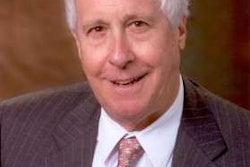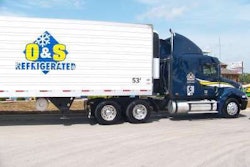The Canadian Trucking Alliance said this week that the nation’s Council of Deputy Ministers Responsible for Transportation and Highway Safety has responded to a request from CTA and the provincial trucking associations for the creation of a National Safety Code standard for electronic onboard recorders by directing the Canadian Council of Motor Transport Administrators to proceed.
A specific and prescribed form of EOBR technology has been mandated by the European Economic Community for several years, and there is growing anticipation that the Federal Motor Carrier Safety Administration will introduce a U.S. EOBR mandate. CTA says it first called upon the Canadian federal and provincial governments to work with it to develop an EOBR mandate in 2004.
In 2006, Transport Canada issued a discussion paper that concluded there were no insurmountable challenges to introducing an EOBR mandate in Canada. However, rather than commence work at that time, the Canadian governments decided to wait six months in order to see what the United States was going to do. In 2007, FMCSA issued a notice of proposed EOBR rulemaking, which immediately came under fire for being too weak. Groups like the National Transportation Safety Board and the Commercial Vehicle Safety Alliance subsequently called upon FMCSA to move toward a universal EOBR mandate.
More recently, the issue started to heat up again. At a December 2008 EOBR conference in Minneapolis, then FMCSA chief administrator, John Hill, said that the final rule would expand the scope of the NPRM and that it likely would be a precursor to a universal mandate. In January 2009, with the installation of the Obama administration, FMCSA withdrew its rule for further review.
In February 2009, CTA wrote to federal transport minister John Baird informing him that the alliance continued to be of the view that the adoption of a universal EOBR mandate in North America is inevitable and that Canada should not be a policy-taker but work with industry and with U.S. regulators to ensure consistent and compatible regulation between Canada and the United States wherever possible.
“Had Canada, for example, adopted a wait-and-see approach to the federal hours-of-service regulations, we would not have achieved one of the more constructive aspects of both the Canadian and U.S. regulations — the voluntary rest-and-recovery provision, which was developed and proposed by CTA in the early 1990s,” says David Bradley, CTA’s chief executive officer. “And we would not have the flexibility we have under Canada’s sleeper-berth provisions.”
Bradley concedes that development of a national EOBR policy will not be easy. “No one, least of all CTA, discounts the amount of consultation and work that will be required,” he says. “We do not underestimate the significant challenges an EOBR mandate imposes on industry and government. It is essential that there be a smooth, orderly transition and implementation that allows industry and government the time to adjust and puts in place mechanisms and policies to deal effectively with concerns over costs, enforcement policy, etc.”














